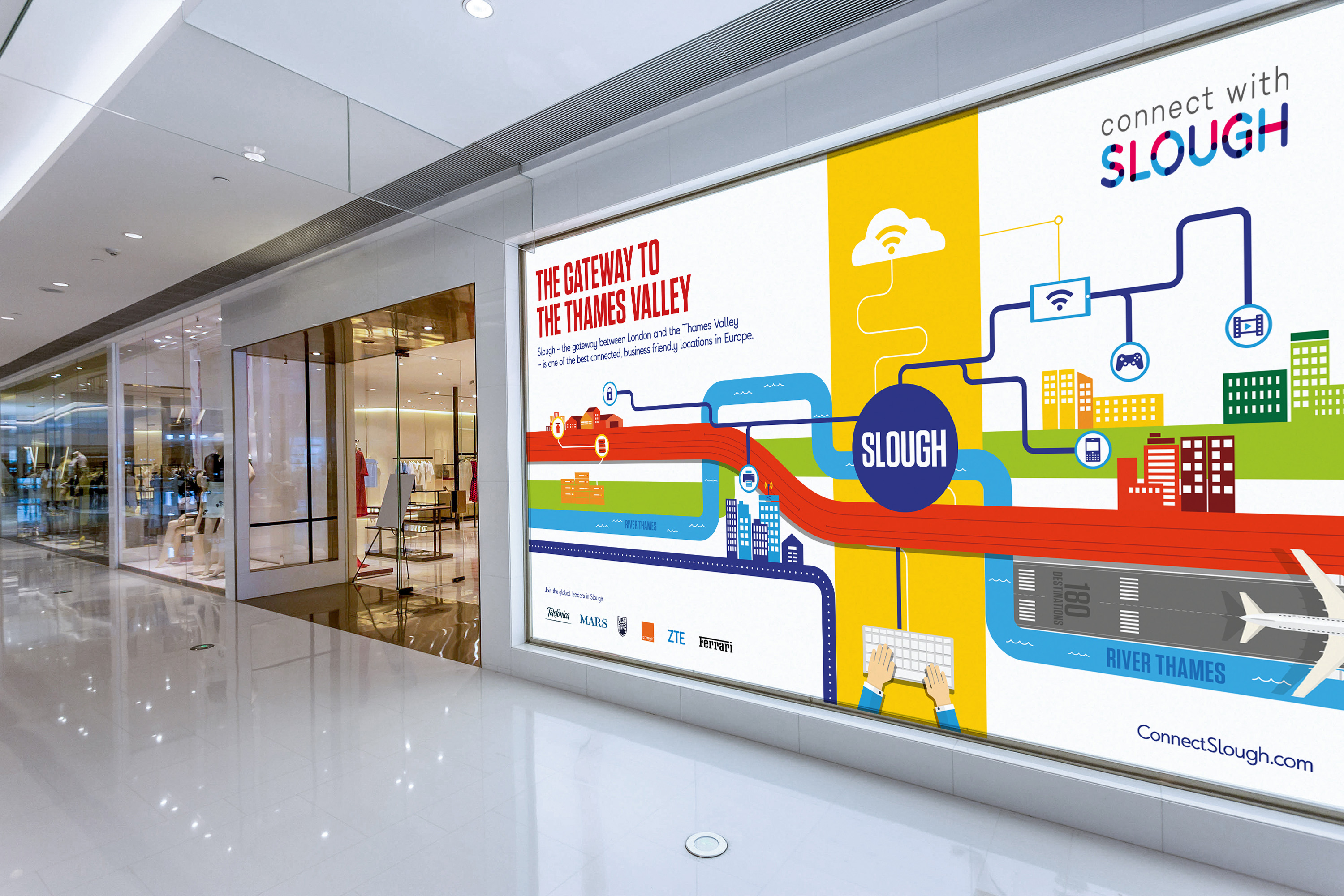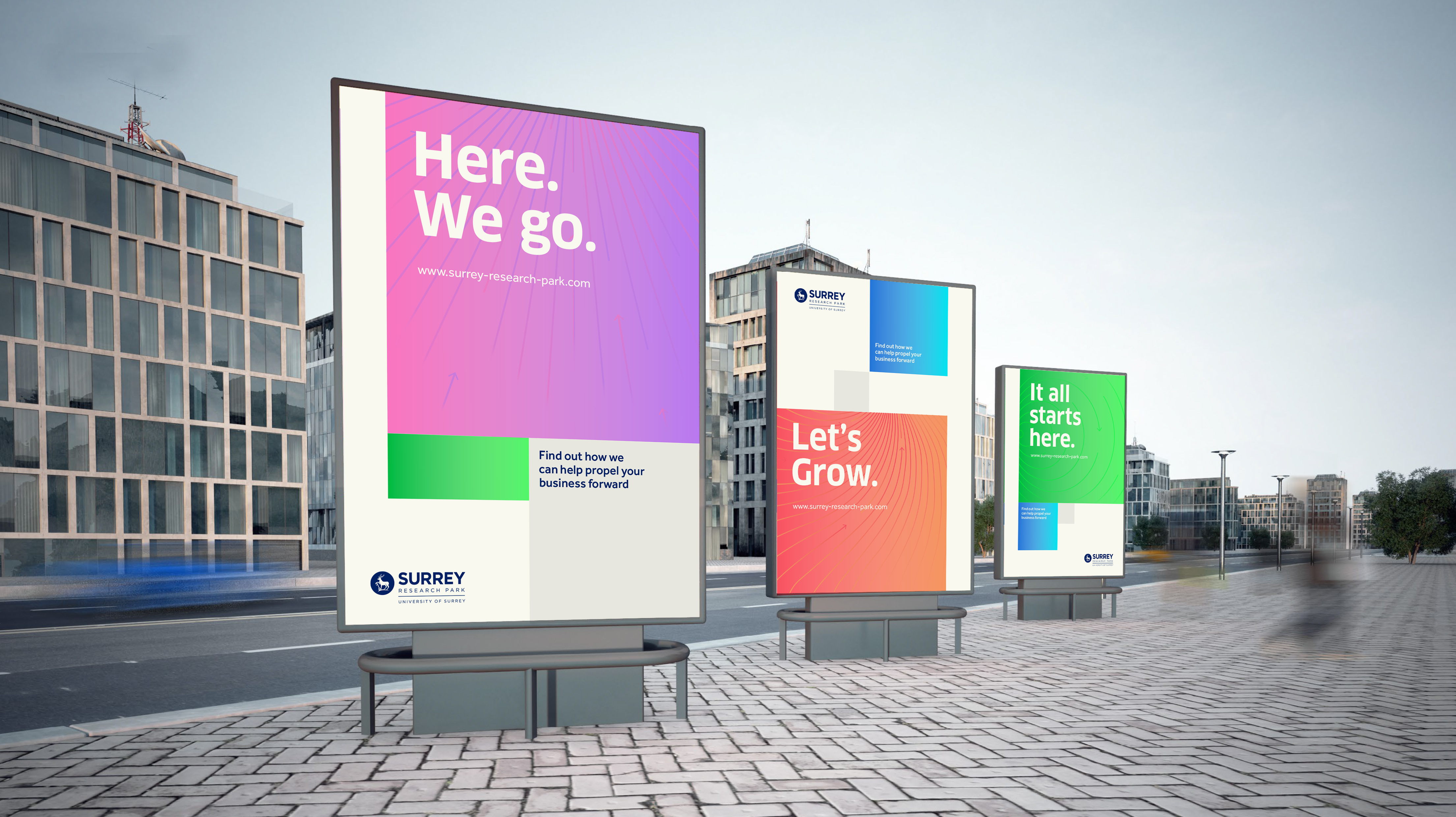Places compete – for attention, investment, talent, tourism and meaning. They’re layered and lived, shaped by planning frameworks, infrastructure, and culture. Creating a placebrand is therefore just as much about creating alignment around a clear narrative as it is about identity. Think soft infrastructure: a framework that guides perception, anchors investment, and supports long-term growth.
What do we mean by a place brand?
A place brand is a system of signals that shape how a place is understood and experienced: who it’s for, what it stands for, and how it behaves. That includes visual identity, naming, and storytelling – but also transport, wayfinding, architecture, policy language, and lived experience.
- The London Underground map is more than a diagram. It’s a symbol of connectivity and clarity, making a complex city legible.
- Singapore’s MRT system, efficient and bilingual, is not just transit. It embodies values of order, accessibility, and ambition.
These aren’t just physical infrastructure. They’re identity artefacts.
The Industry framework: three interdependent factors
In our work, we use a simple but powerful triangulation model to structure place brand positioning:
- Location – strategic geography, connectivity, proximity to transport hubs and gateways, universities, tourist attractions and industry clusters.
- Physical factors – architecture, landmarks, masterplans, infrastructure, natural features.
- Social and economic factors – culture, lifestyle, education, housing, workforce skills, employment opportunities, community, services, and facilities.
Strong place brands operate at the intersection of these three. They reveal the role a place plays in a wider ecosystem, and how it competes against peers – whether that’s a life sciences park in the UK versus one in the Netherlands, or a regeneration zone in London competing with rival districts for retail tenants and civic funding.
What place branding can actually do
Done well, a place brand has real strategic utility:
- Make a place a destination of choice – for business, homebuyers and tourists.
- Be a catalyst for economic development – aligning councillors, developers, businesses, retailers and community stakeholders around a common vision.
- Attract investment from international and national governments and investment funds.
- Strengthen community cohesion by creating pride in the place.
Lessons from practice
There are many great examples of placemaking that demonstrate these principles in action:
- Glasgow’s miles (smiles) better tongue-in-cheek brand campaign pitted Glasgow against its arch rival Edinburgh by tapping into a core brand truth: the people of Glasgow are famously friendly and welcoming.
- Hackney Wick used the draw of cheaper rents, canal side warehousing, studios and live cultural events to create ‘London’s coolest neighbourhood’ which is now home to artists and freelancers working in music, performing and visual arts; film, TV, radio, photography; design, advertising, marketing and publishing.
- Cambridge demonstrates how a place brand emerges through clustering and proximity: science parks, venture capital, and academia reinforcing a single narrative of intellectual capital.
- Dubai expresses ambition through spectacle – the Burj Khalifa, the Palm, the Museum of the Future – each a symbol of scale and intent.
- New York’s pop art inspired I♥NY slogan designed by Milton Glaser in the 70s has endured and evolved from a tourist motif to become a shorthand for belonging and resilience.
- Greece has embedded national identity in a palette of blue and white, which mirrors its whitewashed island houses, blue seas and blue skies.
Each of these place brands are based on a relatable truth that is experienced everyday.
Case study: Sough

Our place branding work for Slough was anchored in its location.
Slough suffered from the stigma of ‘The Office’ and the immortal lines of John Betjaman’s poem ‘Come, friendly bombs, and fall on Slough!’. But Slough is host to a large number of corporate HQ’s and the largest data centre hub in Europe. Spurred by the opening of the new Elizabeth Line, we worked with stakeholders – including Segro, owners of the Slough Trading Estate, Slough Borough Council, developers and homebuilders – to create a positive investment case for Slough.
The resulting proposition, ‘Better Connected for Business’, capitalised on Slough’s strategic connectivity. It is 10 minutes to Heathrow, next to the M25, and a 26 minute journey to the City of London. It is also situated on the main fibre optic line between London and the US, giving it very robust and fast fibre optic broadband connectivity.
Case study: Surrey Research Park

Our place branding work on Surrey Research Park centred on the spirit and determination of the people who make the place.
Surrey Research Park, a Surrey University enterprise, is the second oldest research park in the country after Cambridge and home to a number of high profile university spin outs such as Surrey Satellite Technology. With the post pandemic surge in new life science and research parks, Surrey needed to sharpen its positioning so it could remain competitive. Our research identified a real drive and energy amongst the people working on the Park.
This led to the development of an attitudinal positioning that would appeal to the kind of entrepreneurs, innovators and scientists: “This is a place where those with drive, grit and determination gravitate; a place where people come to roll up their sleeves and get things done.”
Brand as infrastructure, not embellishment
Place branding is a strategic tool. It connects planning to perception, vision to behaviour.
- It provides a trajectory for growth.
- It unifies stakeholders around a common agenda.
- It anchors growth in a coherent story.
- And it ensures the identity evolves alongside the place itself.
In a competitive landscape where investment is mobile, talent is global, and attention is short, strong place brands matter more than ever. Not because they tell a better story – but because they help deliver one.